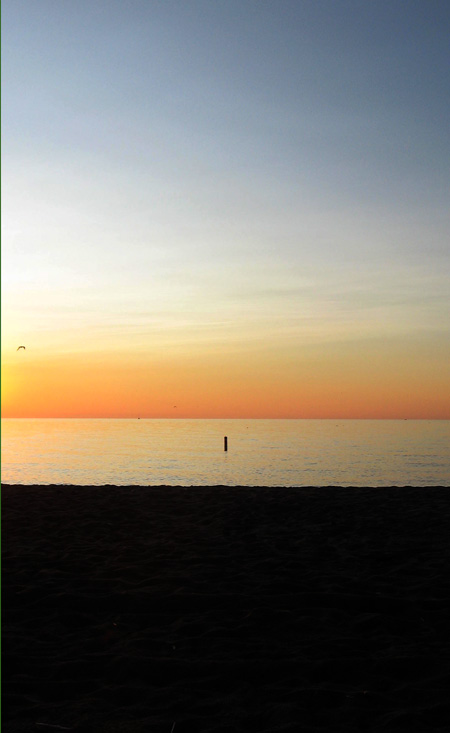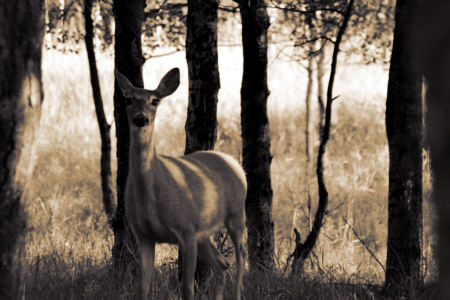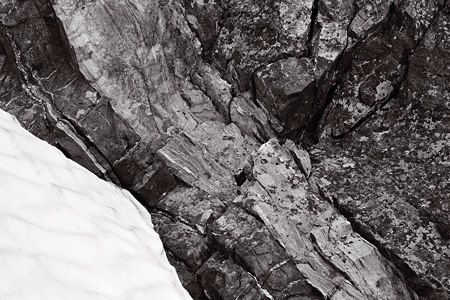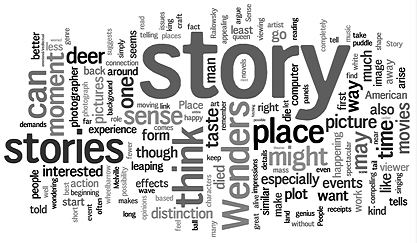I recently came across an amusing web site called Wordle. It produces visualizations of the words making up a piece of text, with the size of a word in the picture reflecting its frequency in the text. I used it to create the representation below of what my previous post, “The Place of Story” (including comments), is about. (Clicking on the image will take you to a larger, more readable version in the Wordle gallery.)
Archives for August, 2008
Mentor
Much of this molten electricity passing for a lake has been by Birgit’s dunes. Quickened by her lament about passed opportunities, we made our way this evening to the headlands.

This image barely captures a brief interlude as the sun rests upon the horizon and the water becomes a great shimmering expanse. An air of reverence descends upon the beach.
I would imagine that much the same happens in Michigan.
soft curvatures
Sand makes for soft curvatures.

Close-ups of the dunes show more… »
The Place of Story
When we think of story we think first (at least I do) of short stories or novels. Of course, movies and theater and opera tell stories, and music and dance can also. Melanie’s Moby Dick series of fabric panels is closely tied to that story, though, as she says, not as conventional illustration. I’m beginning to think that story is a notion not at all confined to the literary arts. In fact, I suspect that stories don’t even require language–though it’s pretty hard to communicate about them without it.

Moby Dick series (guest post by melanie)
These are most of the completed panels in my Moby Dick series. They’re not exactly illustration — at least, I don’t think of them that way — but the people who’ve seen them always ask about the text that prompted the image, so I’ve included the relevant excerpts from the text.
The Pequod (Chapter 16)
All round, her unpanelled, open bulwarks were garnished like one continuous jaw, with the long sharp teeth of the sperm whale, inserted there for pins. To fasten her old hempen thews and tendons to.
What do you have to deal with?

To judge from the talks at the opening of a current group exhibit, it is a truth universally acknowledged that a landscape artist working in Montana must deal in some way with the huge volume of imagery and the stereotypical impressions people have of this state. When it comes to notions of what art should be, there may not be much difference between residents and visitors. The standard expectations seem to be of monumental mountainscapes, majestic mammals, or cowboy kitsch.
As a photographer working in black and white–already outside the norm–I am, depending on the photograph, taken to be either just like Ansel Adams or not at all like him. And after that it’s digital or film and do I manipulate the images?
Don’t get me wrong. The questions are not only valid, they’re important ones that I’ve grappled with in my work, as have many others. And I actually enjoy responding to them if I’m talking to someone interested and open-minded. Still, it’s extraordinarily refreshing to discuss with someone free of the usual preconceptions.
Montana and landscape are hardly unique in this regard. What do you have to deal with, either in creating or presenting your art? Is it generally a good or a bad experience for you?

